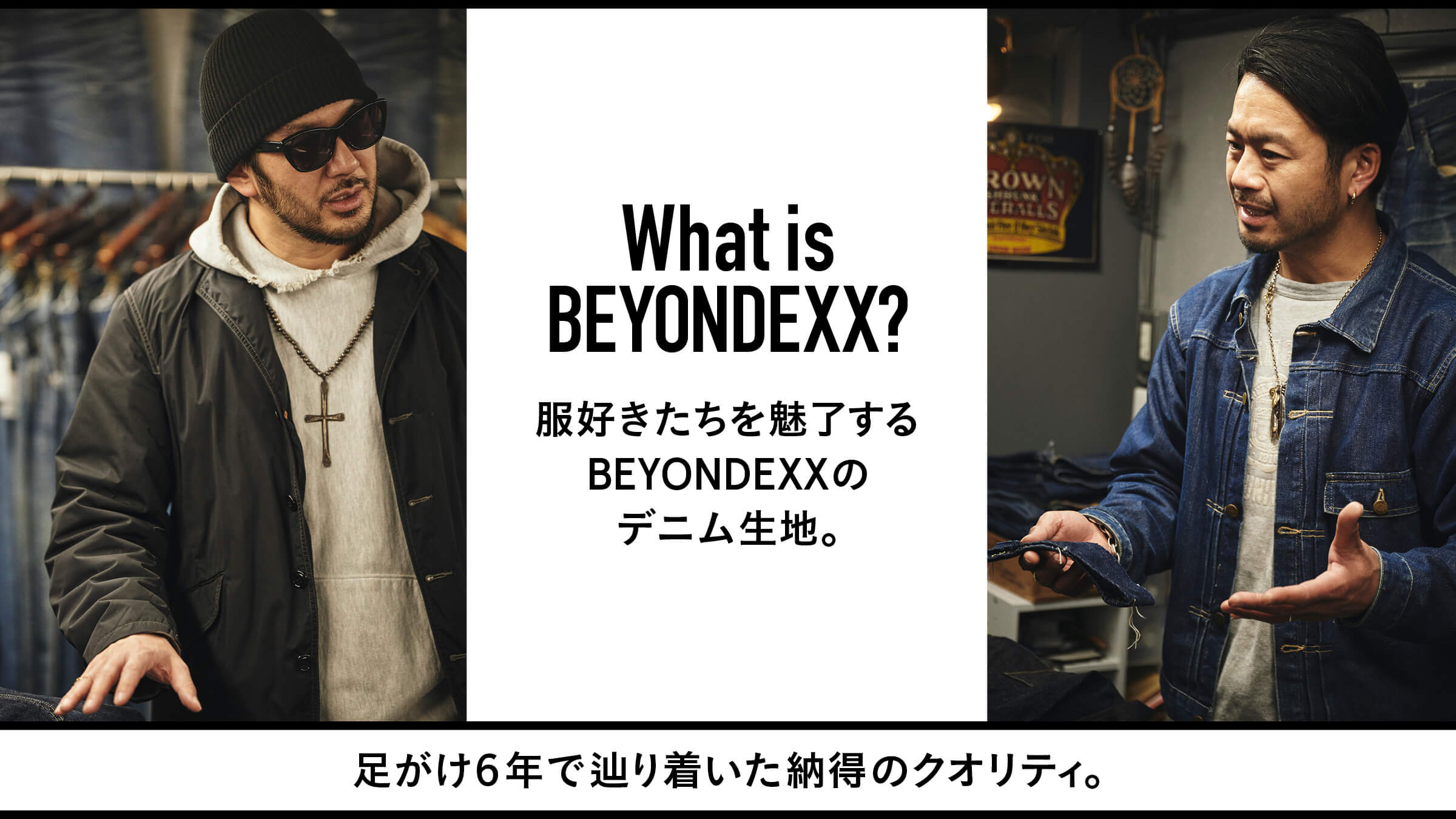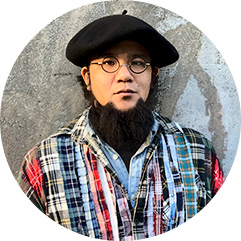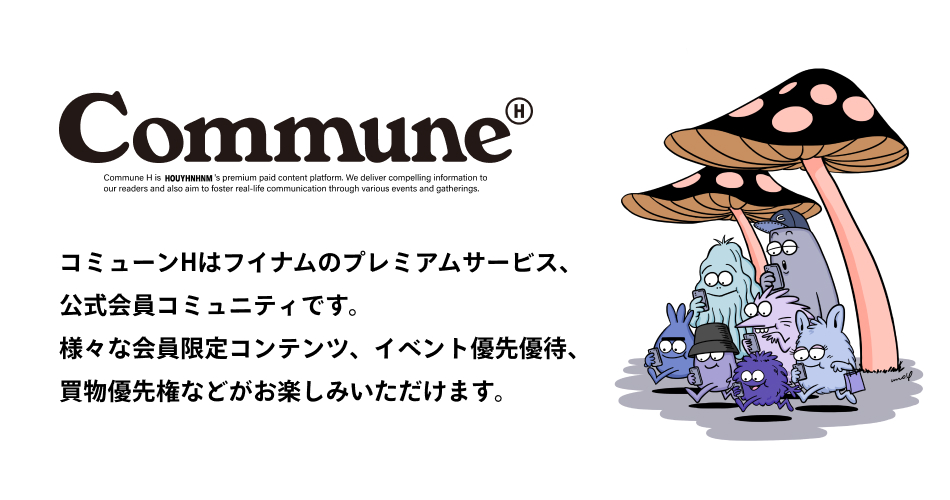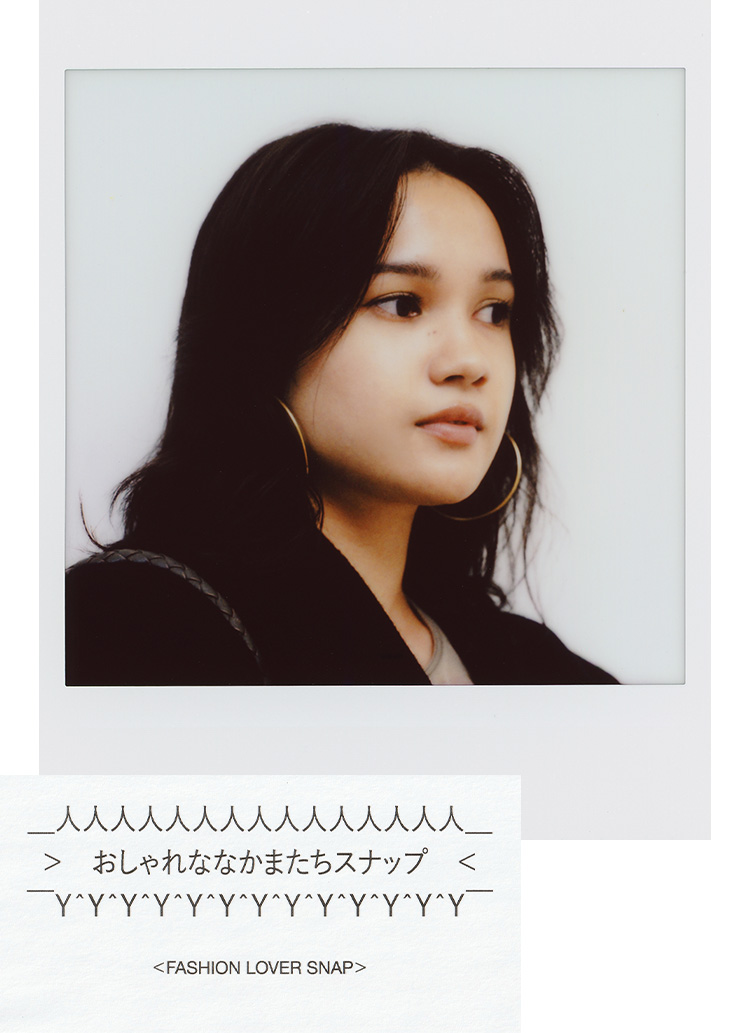Ideas that would not be possible without taking away common sense and thinking from scratch.

A: During that time, you were also developing fabrics at the same time, what kind of fabrics were you aiming for?
Konno:The first thing we worked on was the fabric used for denim items called "World War II models" that were made between 1942 and 1946. I have visited "Berber Gin" many times, and when I see the World War II models on hangers, they have an aura of strangeness. Compared to other vintage denim fabrics, it is totally different, and the main reason why I wanted to make this item is that it visually differentiates itself.
Fujiwara:The denim of the Great War models has a thicker fabric and a darker color. I call them "black. As the name implies, it was during World War II, when the government was forcing civilians to comply with a decree to control supplies in order to focus on military spending.
Konno:I don't know exactly why they were thicker and darker because I don't have any data on them, but I think they were made of sturdier fabrics and sold because supplies were low after the control order was issued. In fact, some brands have changed their sewing from double stitching to triple stitching.
Fujiwara:The only thing that remains is the fact that the order was issued by the government. If my uncle who worked for Corn Mills at the time were still alive, he might have such documents (laughs).

Konno:The fabric is obviously thicker only for the Great War models, and both "Levi's®" and "Lee" and other companies used the same fabric during that period.
Fujiwara:It is so only during that time of the year.
Konno:I like one-pocket G-jans, and I collect items from various store brands. When items from various brands are combined, one fabric can be used to complete the whole look. I think that is another attraction.

So this is the fabric that you reproduced. It took us 6 years to develop this fabric.
Konno:That's right. I had made about 6 or 7 kinds of fabrics, but I was not satisfied with them, and instead of commercializing them, I donated them as materials for bazaars and other events to local orphanages and institutions to which I had referred people. Then one day, Yutaka finally gave me a precious scrap of fabric from a World War II model.
Fujiwara:I had heard that Mr. Konno was having trouble finding jeans of the World War II model. So I thought the best I could do was to show him vintage jeans or provide him with such fabrics. I knew that deadstock fabrics were the best to give away as reference materials, but I couldn't just cut off a part of it and use it for research.
One day, however, we sold a pair of jeans we had in our store that were in good condition and were a bit long. They were a little long, but I offered the customer two options: to leave them as they were or to hem them. The customer eventually decided that he wanted to have it hemmed, so I asked, "What do you want to do with the leftover scraps? The customer said, "Please dispose of them at Mr. Fujiwara's place." Miraculously, we were able to obtain a part of the garment with minimal color fading.


Konno:We used the scraps as the basis for research together with a group of denim experts introduced to us by Mr. Yutaka. When we looked at the thread shape, we made a great discovery.
What was the big discovery?
Konno:I can't go into details, but at any rate, it was completely different from the denim we had been using until now. It was like our common sense was overturned, and we realized that we had been making products bound by fixed concepts. It was an idea that would not have been possible unless I had removed my common sense and thought about it from scratch. For example, do you see the grains in this fabric?


Is it Nep?
Konno:It looks like a nep, but it is not. Nep is intentionally created when weaving fabric, but in the fabric of the World War II model, it is naturally produced. When the fabric fades, the color fades like dots only here. We call it "spot fading. It was very shocking to see the results of the fixed concept of "this is what a World War II model should look like" turn out to be completely different from what we expected when we actually quantified the composition of the fabrics.
I'm sure there are vintage collectors and researchers all over the world, but weren't there others who were doing what you are doing?
Konno:There may have been many people doing such things as measuring yarn thickness and twist coefficients. However, I have never heard of anyone who has gone so far as to make fabrics from these measurements. This time, we ordered the yarn separately, and the craftsman at the factory, who has been making denim for a long time, said, "This is the first time I've seen this kind of production method.

Are the yarns both vertically and horizontally custom-ordered?
Konno:Yes, we do. The same is true for the yarn, but this time we have experts carefully working on the selection of the cotton. When it comes to selecting the proper fiber length to make yarn for the Great War model, we have to start from there.
Do you use special dyes?
Konno:Yes, it is. This fabric has a slightly thicker warp, but the indigo is deeper because of that. In order to do so, the yarn must be dyed properly, and there are only a limited number of places that can do that, so in that sense, it may be special.
Because the color is deeper, it takes longer to grow than other denim. Since the stages until the color turns white can be finely chopped, it is easy to create gradations. That may be one of the charms of the Great War model.









